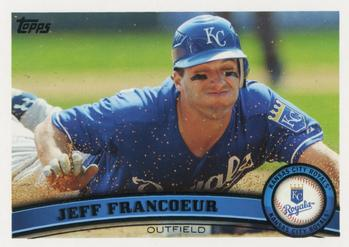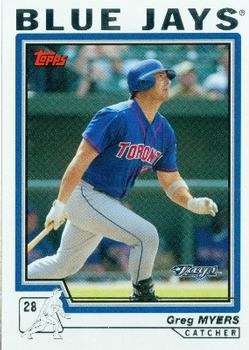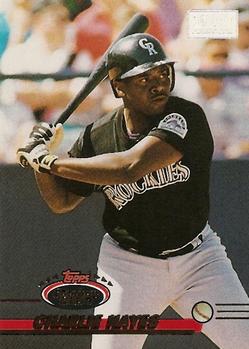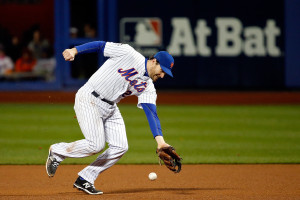This post is for voting and discussion in the 113th round of balloting for the Circle of Greats (COG). This round adds to the list of candidates eligible to receive your votes those players born in 1874. Rules and lists are after the jump.
The 10 best offensive seasons among the worst hitters of the last 30 years: #8 Jeff Francoeur 2011
 Oh, Frenchy. When you were 23, in 2007, it seemed like you might be a star. You posted a whopping +20 fielding runs while playing right field for the Braves. Your hitting was good enough and would probably improve. Right?
Oh, Frenchy. When you were 23, in 2007, it seemed like you might be a star. You posted a whopping +20 fielding runs while playing right field for the Braves. Your hitting was good enough and would probably improve. Right?
Wrong.
Despite early promise, the bat of Jeff Francoeur didn’t develop as hoped. Since his rookie year of 2005, he’s put up -86 batting runs, including 7 different seasons of at least -10. But in 2011, his first year with the Royals, he put it all together on offense. He had career highs in OBP and SLG, and also stole more than twice as many bases as in any other season.
Even that year, he didn’t walk enough and struck out too much, but his 71 extra-base hits in 153 games made a big difference. Unfortunately, his days of being an above-average fielder were behind him, and his total WAR for the season was “only” 3.1. Had he played the field as well as in past years, he could have posted the only 5+ WAR season of his career.
2015 High Heat Stats Award Results
I asked you last week who you thought deserved to win each league’s MVP and Cy Young Awards. 12 of you submitted ballots for MVPs and 13 submitted Cy Young votes. Winners are after the jump:
Circle of Greats 1875 Balloting
This post is for voting and discussion in the 112th round of balloting for the Circle of Greats (COG). This round adds to the list of candidates eligible to receive your votes those players born in 1875. Rules and lists are after the jump.
The 10 best offensive seasons among the worst hitters of the last 30 years: #9 Greg Myers 2003
This is part of a series of posts. Please read our methodology here
Greg Myers spent 18  years in the majors. He mostly played as a backup catcher, and he mostly hit as a backup catcher too. Before 2003, he appeared in 100 games in a season just twice (107 games in 1991, -4 batting runs and 108 games in 1993, -11 batting runs.) Through the 2002 season, Myers averaged 65 games played a year and amassed a total of -80 batting runs.
years in the majors. He mostly played as a backup catcher, and he mostly hit as a backup catcher too. Before 2003, he appeared in 100 games in a season just twice (107 games in 1991, -4 batting runs and 108 games in 1993, -11 batting runs.) Through the 2002 season, Myers averaged 65 games played a year and amassed a total of -80 batting runs.
Then, in 2003, something weird happened. Myers became the Blue Jays’ starting catcher. Ken Huckaby was expected to hold the job (you might recall this was the year he injured Derek Jeter in spring training) but Myers was the starter from the beginning of the regular season.
And you know what? Myers hit. In a career-high 121 games, he posted career highs of 15 HR, 52 RBI, 51 runs, 101 hits, 37 walks, plus career highs in all 3 slash line categories, coming in at .307/.374/.502. His +13 batting runs was second in the AL among catchers, though well behind leader Jorge Posada with +37. Next best were A.J. Pierzynski with +10 and Jason Varitek with +9.
Even more impressive, Myers’ 2003 was the 5th-most batting runs ever by a catcher in his Age 37 season. bested only by Ernie Lombardi (1945, +21), Mike Piazza (2006, +14), Earle Brucker (1938, +14) and Posada (2009, +14).
That was Myers’ last hurrah, though, as he played in just 14 games over the next 2 years before retiring. He finished with -83 batting runs in the rest of his career outside of his +13 2003.
Crowdsourcing Cys Young
Yesterday, we began a conversation about this year’s MVPs. The Cy Young Award races pack more drama this year, particularly in the NL, where the top four candidates had historic years and three of them are practically indistinguishable in their excellence. Let’s vote for the best pitchers now.
List your top five candidates for Cy Young in either league or both in the comments, with or without commentary. I’ll compile on Friday, 11/13, using the same 7-4-3-2-1 scoring system MLB uses. Stats after the jump. All are sortable. Please don’t take the default sort as an endorsement.
MVP Crowdsourcing
I can’t think of a better crowd from which to source annual baseball awards than this site’s readership. Let’s kick off a series of groupthink ballots with a conversation about who should win the MVP award in each league. Your mission, should you chose to accept: List the ten players most worthy, in order, of winning the MVP in either league, or both. Feel free to elaborate on why you chose these players or just leave the ballot there in the comments.
My task: counting the votes. I’ll do it a week from tomorrow: Friday, 11/13. I’ll use the same 14-9-8-7-6-5-4-3-2-1 scoring that MLB uses. Also, after the jump, I’ll throw some stats out, since that’s what this site is about, right?
The 10 best offensive seasons among the worst hitters of the last 30 years: #10 Charlie Hayes 2003
This is part of a series of posts. Please read our methodology here)
Charlie Hayes played 1 4 years in the majors and was liked enough to do two tours of duty with 3 different franchises–the Giants (1988-89 & 1998-99), the Phillies (1989-1991 & 1995) and the Yankees (1992 & 1996-97). By virtue of playing an important position, third base, and being a consistently above-average defender, he turned out a career WAR of 10.5 despite being a below-average hitter for a corner infielder.
4 years in the majors and was liked enough to do two tours of duty with 3 different franchises–the Giants (1988-89 & 1998-99), the Phillies (1989-1991 & 1995) and the Yankees (1992 & 1996-97). By virtue of playing an important position, third base, and being a consistently above-average defender, he turned out a career WAR of 10.5 despite being a below-average hitter for a corner infielder.
Hayes posted by far his best offensive season when he joined the Rockies in their inaugural season of 1993. And this season wasn’t just a “Coors effect”–his 118 OPS+ was 4th in the NL among 3Bs, just behind Gary Sheffield (120) and Dave Hollins (119), who all trailed leader Matt Williams (137) by a good chunk.
In 1993 Hayes had career bests in all of his slash-line categories, posting .305/.355/.522 vs career numbers of .262/.316/.398. He posted career highs in just about every offensive statistic, including hits, HR, 2B, SB, RBI, and R.
All this translated to +12 WAR batting runs that season. In his 13 other seasons, he totaled -92 batting runs, with every season being negative save a +3 in 1998.
Like many players on this countdown, Hayes is probably remembered as a better offensive player than he actually was, thanks to substantial value in his defense and his deserved longevity in the majors.
The 10 best offensive seasons among the worst hitters of the last 30 years
In this upcoming series of posts, we look at great batting seasons by players who were otherwise among the worst of their contemporaries, at least with the bat.
Before we dive in, let me explain the methodology and the meaning.
- The “worst hitters of the last 30 years” were the 200 batters, excluding pitchers, with the worst WAR batting runs totals from 1986 to 2015. To give you a sense, the first 3 in this list are Ozzie Guillen (-279 runs), Neifi Perez (-278 runs), and Omar Vizquel (-244 runs) and the last 3 are Tom Foley (-63 runs), Rafael Santana (-63 runs), and Peter Bergeron (-63 runs.)
- These players are, of course, not the worst players to play MLB during that time. The worst players all had much shorter careers and were, in most cases, even worse hitters but didn’t have enough time to accumulate a negative enough batting runs score to make the list. In other words, most of the 200 players had at least 500 games in the majors and the median number of games was about 990. These are all guys who were at least perceived as “quality major-leaguers”.
- For one thing, my analysis doesn’t include anything about defense or any of the other components of WAR, such as base running or positional scarcity. It’s no coincidence that Guillen, Perez, and Vizquel all played a lot of shortstop (and mainly played it well). Much of their overall value as ballplayers was in their defense and is not considered in this study.
- Among that list of 200 players, I found the best individual WAR batting run seasons, tweaked it a bit using my opinions, and created the top 10 list.
We’ll start with entry #10 on the list in a few minutes.
2015 World Series Preview: Game 5
A patented Kansas City Royals comeback—the kind where they keep fouling off tough pitches and putting the mistakes in play until you implode—has them one victory away from a World Series championship.
Major League Baseball couldn’t dream of juicer storylines leading in to Game 5. Even if the season comes to an end on Sunday night, here are some stats to help you savor it.
Historically Speaking…
- With one more victory, Kansas City would avenge the gut-wrenching loss it suffered to the San Francisco Giants under these same bright lights the previous year. In doing so, this would be the first team since the 1988-89 Oakland Athletics to get a ring the year after losing in the World Series.
- Alcides Escobar owned the month of October, setting a franchise record with the longest hitting streak a Royals player has ever had in the postseason. And now, he’s within reach of matching Pablo Sandoval (Giants, 2014) for most total postseason hits compiled in one year. Escobar is four hits away from tying Sandoval at 26. As the lead-off man on the visiting team, he’s virtually assured of getting enough plate appearances to attempt that in Game 5.
- Although without a start in this postseason, Royals outfielder Paulo Orlando has made his presence felt as a late-inning defensive replacement. Assuming that Sunday is another close contest requiring his services, Orlando could become the first player since John Lackey (Anaheim Angels, 2002) to record a hit on his birthday during a World Series.
- If the New York Mets can’t deliver a title for their fans, the least they could do is give them more Bartolo Colon. The round right-hander continues to defy the laws of physics by holding his own against world-class athletes at age 42. Colon has appeared twice thus far against the Royals. The only player to pitch more games in a World Series at an older age is Jim Kaat (St. Louis Cardinals, 1982).
What to Watch for
- The Royals have dominated late inning pressure situations in this matchup and throughout the postseason, putting immense pressure on the Mets to jump out to an early lead against Edinson Volquez. But it’s going to be difficult to make solid contact. Volquez’s sinker came out of his hand with fiery velocity in October, and with nastier movement on its journey to home plate than he showed during the regular season. The Mets can win the battle by subscribing to a patient approach against the pitcher with the worst career walk rate among active starters (min. 1,000 career innings).
Follow along for ongoing coverage of the World Series!
And in case this is the cruel end to baseball season, remember that HHS has football goodies for you, too!

